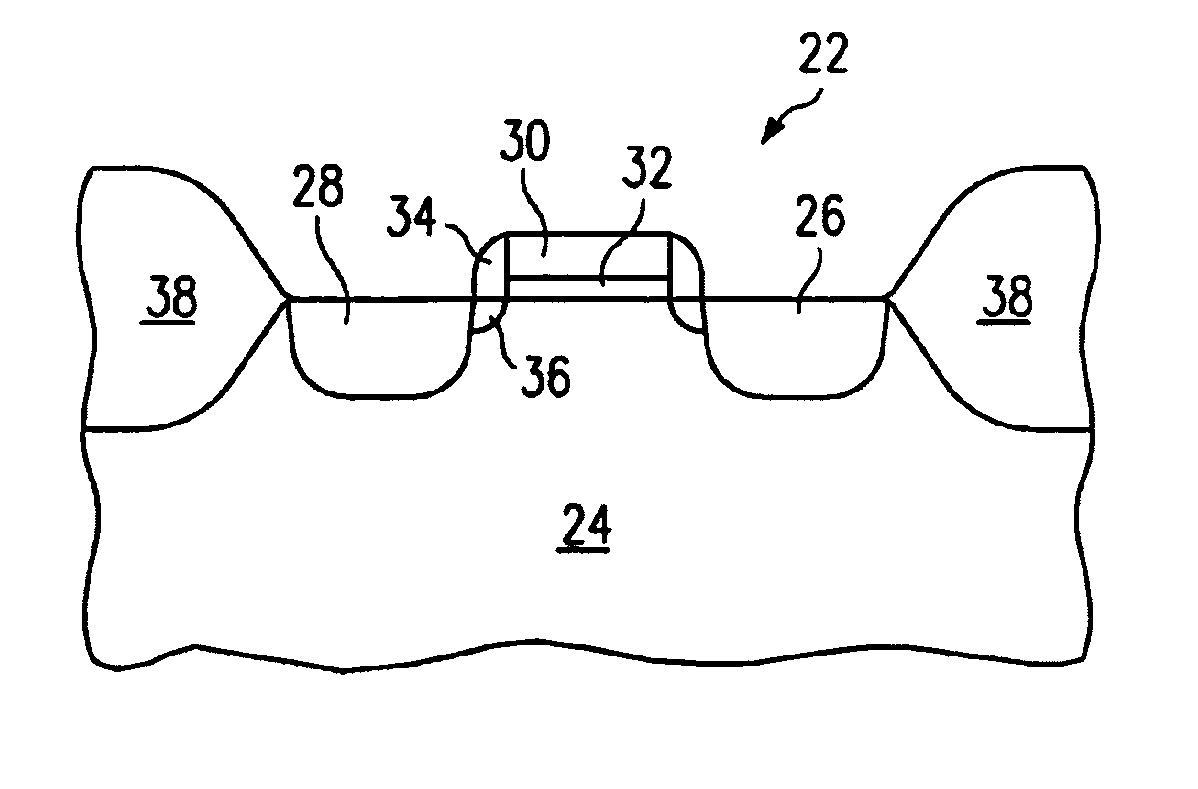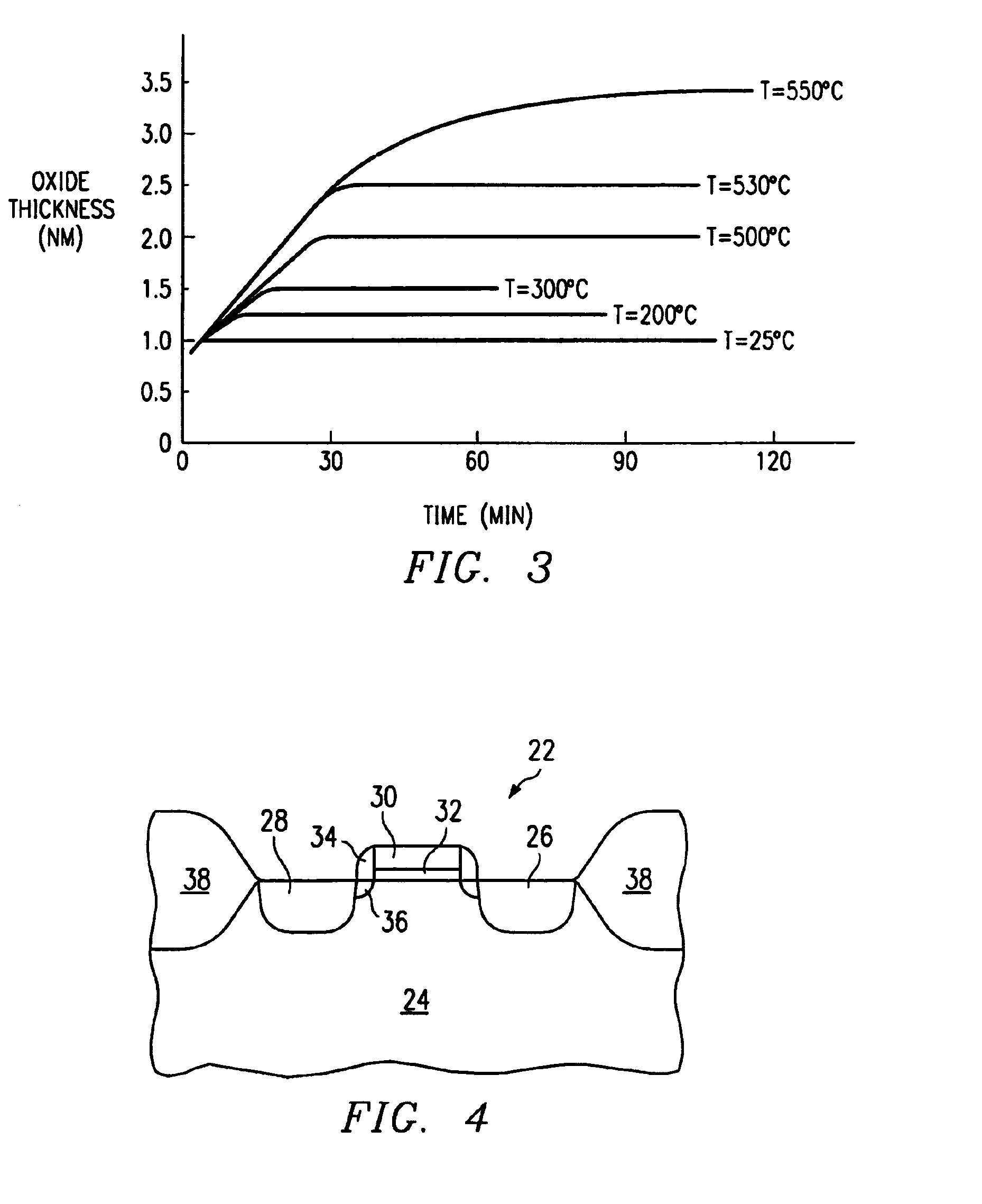Low temperature method for forming a thin, uniform oxide
a low temperature method and oxide technology, applied in the direction of basic electric elements, electrical equipment, semiconductor devices, etc., can solve the problems of large variation in tunnel current, reliability problems, and considerable challenges of sub>gate dielectrics in this thickness regim
- Summary
- Abstract
- Description
- Claims
- Application Information
AI Technical Summary
Benefits of technology
Problems solved by technology
Method used
Image
Examples
Embodiment Construction
[0018]FIG. 1 outlines a method of using this invention to form a very thin, uniform SiO2 gate dielectric on a silicon substrate. Initially, Si substrate 10 with a clean surface 12 is provided. Typically, this substrate 10 will include a partially completed integrated circuit with part of the surface 12 being either bare or hydrogen passivated silicon. This surface 12 may already have structures, such as field oxide regions, already formed upon it, and other structures, such as diffusion regions formed in the substrate beneath it.
[0019]We have found that a smooth, flat silicon surface tends to grow a more uniform oxide (particularly for very thin oxides) with this method. Thus, although a hydrogen terminated silicon surface usually produces acceptable results, many very thin, highly uniform silicon dioxide gate dielectrics prefer a silicon underlayer that approaches an atomically flat or atomically stepped surface. For our purposes, an atomically stepped surface will have a very low ...
PUM
| Property | Measurement | Unit |
|---|---|---|
| thickness | aaaaa | aaaaa |
| thickness | aaaaa | aaaaa |
| thickness | aaaaa | aaaaa |
Abstract
Description
Claims
Application Information
 Login to View More
Login to View More - R&D
- Intellectual Property
- Life Sciences
- Materials
- Tech Scout
- Unparalleled Data Quality
- Higher Quality Content
- 60% Fewer Hallucinations
Browse by: Latest US Patents, China's latest patents, Technical Efficacy Thesaurus, Application Domain, Technology Topic, Popular Technical Reports.
© 2025 PatSnap. All rights reserved.Legal|Privacy policy|Modern Slavery Act Transparency Statement|Sitemap|About US| Contact US: help@patsnap.com



